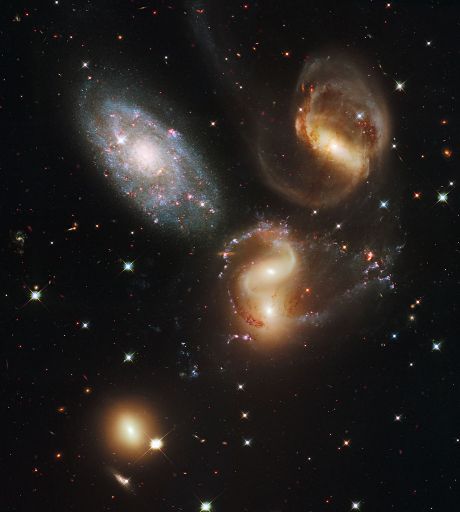Galaxies drifting through the cosmic web

Stephan's_Quintet_Hubble_2009.full_denoise
By NASA, ESA, and the Hubble SM4 ERO Team [Public domain], via Wikimedia Commons
Galaxy clusters are thought to be the largest gravitationally bound objects in our Universe. EU-funded astrophysicists study the available wealth of observations to confirm theories of their evolution through cosmic time.
As vast as our sprawling galaxy may seem, the Milky Way is but a speck
next to galaxy clusters. These collections of hundreds to thousands of
galaxies bound together by gravity grow continuously by accreting mass
from their surrounding intercluster medium (ICM).
Gas accreted is thought to heat up and slow-down in large-scale shock waves surrounding the clusters. Now, an EU-funded team of astrophysicists have identified the signature of such a wave around one of our richest nearby clusters, the Coma cluster that lies about 100 megaparsecs away.
With the support of EU funds, the NEPAL (Non-equilibrium processes in galaxy clusters) project team discovered its gamma-ray signature through observations from the Very Energetic Radiation Imaging Telescope Array System (VERITAS). This long anticipated detection of such a shock wave can provide a new cosmological probe of ICM.
On the other hand, unlike gas accreted from ICM, gas at the core of such galaxy clusters is expected to cool over time, forming a gas flow cold enough to condense and form new stars. The NEPAL scientists were able to identify in high-resolution X-ray images the cold front inside the core and sometimes beyond it.
In particular, shear flow beneath the cold fronts can produce the strong magnetic fields needed to stabilise it against Kelvin-Helmholtz instabilities. Such shear flow-induced magnetic fields have in the past been reproduced in computer simulations. Their existence had, however, remained unconfirmed.
The NEPAL project's findings may shed new light on the cool core of galaxy clusters where old galaxies sit and within which only a few new stars are born. Follow-up studies with observations at different wavelengths are also expected to allow a more complete view of intergalactic matter.
published: 2016-01-29

